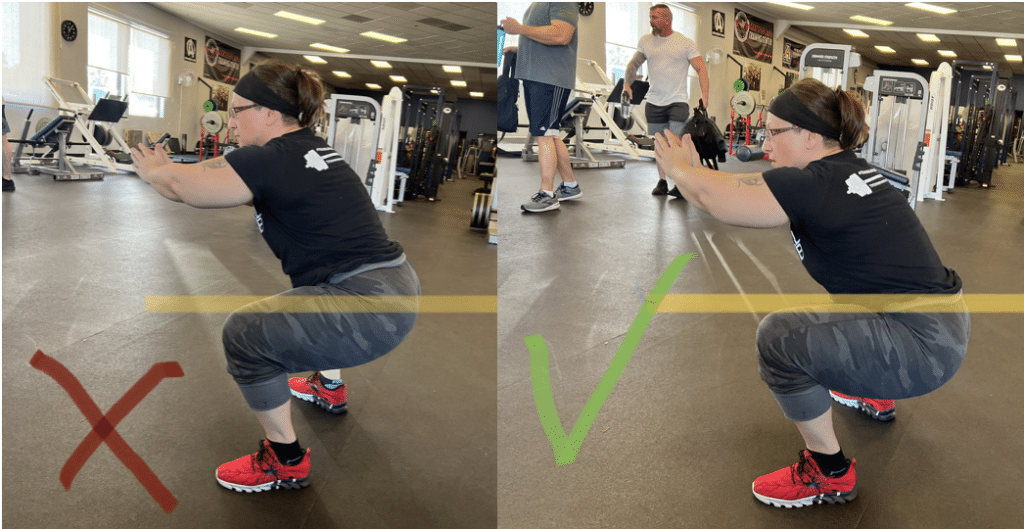I speak with many gym regulars asking me about wanting to train for their first powerlifting meet. The sport has become more accessible over the past decade and everyday gym goers are peaking in interest to compete. Powerlifting is a great way to train with a purpose and go after goals.
Competitive lifting is different than recreational lifting, no matter how serious you train.
Before you start putting in the work. Here are some things to consider.
Technique Is Paramount
Though you may have some years behind you with the big 3 lifts (squat, bench, deadlift), competition lifting has many rules. It is crucial to practice as you would compete when training towards the goal. It is important you know the lifting standards of the federation you are competing in so you can practice to competition standards. Though I won’t go into every rule here are some important things to focus on with each lift when you begin training.
Squat
Nearly all credible federations will require a below parallel squat, which means the top surface of the legs at the hip joint is lower than the top of the knees. All of your training reps should be at this standard. Video tape yourself and make sure your reps meet this standard. When the bar gets heavy you will revert to your training. This means treating light weights like they are heavy. Each and every training rep is prep for your meet. It isn’t just about putting more weight on the bar each to prep your body to lift heavy. You are prepping your nervous system to do the same thing every lift. Treat you warm up sets with focus and attention.

Bench Press
Powerlifting requires a pause on the chest and at the finish of each lift. I have seen people that can “gym bench” 315lbs with a bounce, but they get stuck under 285lbs with the required pause on the chest. In your training you don’t have to pause every single rep of your program, but you should become very comfortable pausing your bench working up to heavier sets in your training cycle. It is also crucial to practice controlling the weight at the top before racking. Nothing is more frustrating than hitting a huge PR at a meet, immediately racking the weight and get 3 red lights because you didn’t wait for the “rack” command.
As you get closer to meet day you should practice the commands with someone knowledgeable calling them out. On meet day you will have some jitters and adrenaline, so you will need to depend on your practice to have a successful meet. Again, it is imperative to know the rules of the federation. Some feds allow you to have your heels off the ground others don’t. Some feds allow the head to come off on the bench, others don’t. All federations make sure your butt stays on the bench. Practice practice practice all these things.
Deadlift
The simplest of all the lifts. Pick it up and put it down. Right? Though this is mostly true, there are many lifters that have bad habits with the deadlift that earn them red lights at a meet. I see lifters all the time getting called for soft knees at the lockout and then flip out when they see the reds show up at the end of the lift. Your knees have to lock out at the end. If the knees are soft or shaking, you will get caught. Another common error is letting the knees shoot forward and letting the bar use the thighs to ramp the weight up. Video tape your deadlifts and make sure your warm up sets are to competition standards. If you rush your light warm up reps, you set yourself up for these mistakes to happen on the platform.
Stop Training to Failure
If you have been training for awhile and focusing on aesthetics, it is common to push hard every training session and feel the burn with each workout. We have all walked out of the gym with shaking legs and feeling exhausted after a session. Training for strength is a different beast.
When strength is the goal we rarely ever push to failure. Doing grindy reps that push to near failure are used less in a strength program than you would imagine. A base cycle of strength programming is usually in the intensity range of 70-85% of your 1 rep max. Reps are usually programmed at around 50% of your max rep range. This means if you can bench 225lbs for 10 reps, most of your sets will be made up of rep ranges between 3-5 reps.
Get on A Program Sooner Than Later
There are tons of programs out there, but depending on where YOU are at in your development, choosing the right program is important. A newer powerlifter jumping on Sheiko, Conjugate, or Smolov makes me cringe. Just because that strong Instagram influencer says it’s the way to go doesn’t mean it’s great for you. I have always focused on different phases of programming and playing with the variables to get the desired results. There are many different phases of a strength programming which we will discuss in Part 2.
